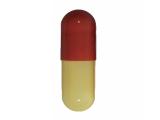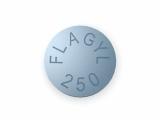Classification of antibiotics
There are three main principles on the basis of which antibiotics can be classified: 1) according to the spectrum of action, that is, according to the nature of the biological object in relation to which this antibiotic is active; 2) according to the chemical structure of the antibiotic; 3) according to the molecular mechanism of the action of the antibiotic on the cell.
Classification of antibiotics by spectrum of action
The antibiotic is usually divided into antibacterial, antifungal and antitumor. For medical practice, such a division is convenient, as it indicates the possible scope of this drug. In fact, such a subdivision has many significant drawbacks, because even antibiotics that are close to each other can differ greatly from each other in their antibacterial spectrum of action. Antibiotics from the penicillin group can serve as examples: some inhibit the development of only gram-positive microbes, others - both gram-positive and gram-negative microbes.
Antibacterial antibiotics inhibit the development of bacteria. Some of them, for example, benzyl penicillin, macrolides, ristomycin (ristocetin, spontin), novobiocin and others, are active mainly against gram-positive microbes, others, such as polymyxin, inhibit the development of mainly gram-negative bacteria, others, for example, tetracyclines, levomycetin (chloramphenicol, chloromycetin), aminoglucosides (streptomycin, monomycin, kanamycin, neomycin and gentamicin), the so-called broad-spectrum antibiotics, inhibit the growth of both many gram-positive and gram-negative bacteria.
Antifungal antibiotics have a specific inhibitory effect on the growth of fungi. The antibiotics nystatin and levorin, which are used to treat candidiasis and other diseases caused by yeast-like fungi, have found wide application in medical practice. The antibiotic amphotericin B is used to treat generalized and deep mycoses. These three drugs belong to the group of polyene antibiotics. Of the antifungal antibiotics of a non-polyene structure, griseofulvin turned out to be a very effective therapeutic agent.
Antitumor antibiotics. It has been established that some antibiotics inhibit the development of not only bacteria and fungi, but can also delay the reproduction of malignant tumor cells. Some of these drugs have found application in medical practice.
Antitumor antibiotics include six groups of chem. compounds, representatives of which are used in the clinic.
The first group consists of actinomycins discovered in 1940. Due to their high toxicity, they did not attract attention for a long time. Only in 1952, in experiments on animals with transplanted tumors, it was found that actinomycins inhibit the development of many transplanted tumors. In the clinic, actinomycins are mainly used to treat adenocarcinoma of the kidney or Wilms' tumor in children.
The second group of antitumor antibiotics are anthracycline antibiotics. The most important representative of this group - rubomycin - is one of the main drugs for the treatment of uterine chorionepithelioma and acute leukemia. Rubomycin in these serious diseases often leads to clinical recovery.
The third group of antitumor antibiotics consists of aureolic acid derivatives. The antibiotic olivomycin belonging to this group is mainly used to treat testicular tumors, including seminomas, teratoblastomas and embryonic cancers in the generalized stage with metastases to the lungs, abdominal organs and lymph nodes. Another important indication for the use of olivomycin is tonsillar, rapidly metastasizing tumors of the nasopharynx.
Classification of antibiotics by chemical structure
Classification of antibiotics by chemical structure is more rational. It allows you to compare the structure of antibiotics with the mechanism of their antimicrobial action, side effects and excretion processes from the body. Antibiotics belong to different groups of chemical compounds. The acyclic antibiotic group includes full-body antibiotics, including nystatin, amphotericin B, trichomycin, candicidin, etc. Another group includes antibiotics of the tetracycline structure - see Tetracyclines. Hygromycin, used in veterinary medicine as an anthelmintic agent, belongs to aromatic antibiotics. The group of oxygen-containing heterocyclic antibiotics includes the antifungal antibiotic griseofulvin, which is widely used in dermatology, as well as the antibacterial antibiotic novobiocin, which is active against gram-positive cocci. Antibiotics Macrolides having in their molecule a macrocyclic lactone ring associated with one or more carbohydrate residues are allocated to a separate group (see Macrolides).
This group includes a number of medically important antibiotics: erythromycin, oleandomycin, etc. The antibacterial antibiotic lincomycin is close to macrolides. Rubomycin is an anthracycline antibiotic. The group of aminoglycoside antibiotics, built from the residues of aminocyclites and carbohydrates, includes streptomycin and its derivatives (see Streptomycins), neomycin, kanamycin, monomycin and gentamicin. A separate group includes penicillins, the most widely used in medical practice (see Penicillins). Antibiotic polypeptides or proteins include gramicidins, tyrothricins, bacitracin, polymyxins, lysozymes, viomycin (florimycin), colicins, etc. Iron-containing polypeptides include the antibiotic albumicin. A rather homogeneous group is made up of actinomycin antibiotics, which have antitumor activity (see Actinomycins). Finally, the last group includes numerous streptothricin antibiotics, which, due to their high toxicity, have not found application in medical practice. Attempts are being made to use some antibiotics from this group in agriculture.
Classification of antibiotics according to the molecular mechanism of action
The most important antibiotics for medical practice can be divided into several groups: 1) affecting the synthesis of the bacterial cell membrane (Penicillins, ristomycin, vancomycin, novobiocin, D-cycloserine, etc.); 2) disrupting the synthesis of proteins in a bacterial cell (antibiotics of the tetracycline structure, macrolides, chloramphenicol, etc.); 3) suppressing the synthesis of proteins in a bacterial cell and at the same time disrupting the reading of the genetic code during translation (aminoglycosides); 4) inhibiting the synthesis of nucleic acids in cells (rifamycins, antitumor antibiotics); 5) violating the integrity of the cytoplasmic membrane in fungal cells (antifungal antibiotics Polyenes).
Semi-synthetic antibiotics
After the chemical structure of most antibiotics was elucidated, attempts were made to carry out the chemical synthesis of antibiotics. The synthesis of levomycetin turned out to be successful, and at present, it is prepared exclusively by chemical means. Although the synthesis of some other antibiotics turned out to be possible (penicillin, gramicidin, etc.), in practice, obtaining them with the help of producer microorganisms is simpler and more economical than obtaining them by chemical synthesis.
Initially, antibiotics were used in the form in which they were synthesized by microorganisms. However, as the chemistry of antibiotics developed, methods were developed to improve the properties of natural antibiotics by partially changing their chemical structure. In this way, the so-called semi-synthetic antibiotics were obtained, in which the main nucleus of the original native antibiotic molecule is retained, but some radicals of the molecule are replaced by others or removed. Particularly great progress has been made in obtaining semi-synthetic penicillins (see Penicillins, semi-synthetic).
It was shown that the core of the penicillin molecule is 6-aminopenicillanic acid (6-APA), which has a weak antibacterial activity. When attached to the 6-APK molecule of the benzyl group, benzylpenicillin is obtained, which is currently produced in the factories of the medical industry and is widely used in honey. practice called penicillin. Benzylpenicillin has a significantly higher antibacterial activity than 6-APA. However, benzylpenicillin, along with a very powerful chemotherapeutic activity and low toxicity, also has some disadvantages: it is active mainly against gram-positive microbes, it is easily destroyed by the enzyme penicillinase, which is formed by some microorganisms, which are therefore resistant to its action.
Especially often among pathogenic bacteria, penicillinase producers are staphylococci. Most penicillin-resistant staphylococci isolated in the clinic form penicillinase. In addition, benzyl-penicillin quickly loses its activity in acidic and alkaline environments and is therefore destroyed in the gastrointestinal tract. The benzyl residue can be separated from the benzylpenicillin molecule and replaced by the rest of the molecule of another organic compound.
Hundreds of different semi-synthetic penicillins (derivatives of 6-APA) have been obtained in this way. Most of them are of less interest than the original benzylpenicillin. But some of the resulting semi-synthetic penicillins were found to be resistant to the action of penicillinase, such as methicillin, which is also effective in the treatment of infections caused by benzylpenicillin-resistant staphylococci. Other semi-synthetic penicillins resistant to penicillinase proved to be resistant to acidic environments (oxacillin). Drugs of this type can be administered orally. There are semi-synthetic penicillins with a much broader spectrum of antibacterial activity than the original benzyl-penicillin, which retard the growth of many gram-negative microbes (ampicillin).
Among tetracycline antibiotics, derivatives were obtained that are excreted from the body much more slowly, and therefore their therapeutic dosages are 5–10 times less than the dosages of the original natural tetracyclines. From the antibiotics rifomycin SV, a derivative of rifampicin was obtained - an effective anti-tuberculosis drug, which, moreover, is much more active against gram-negative bacteria than the original rifomycin SV. New semi-synthetic derivatives of lincomycin, chloramphenicol, etc. were obtained.

















